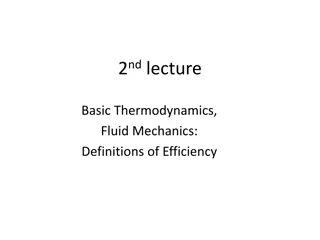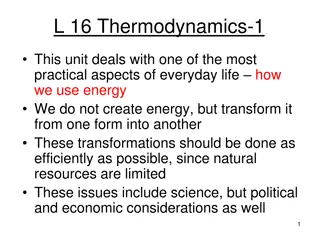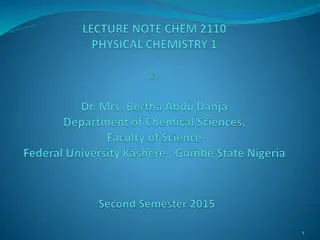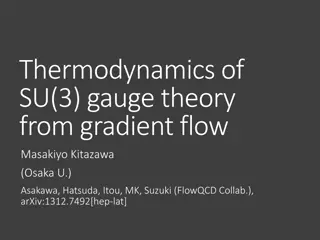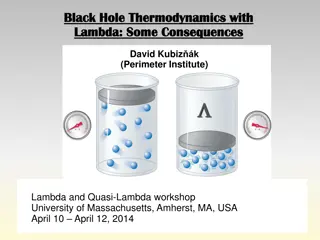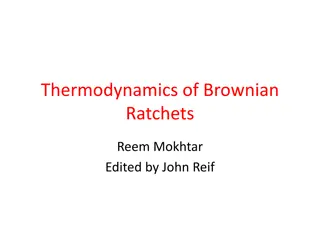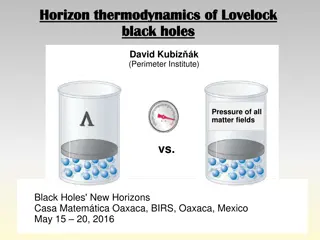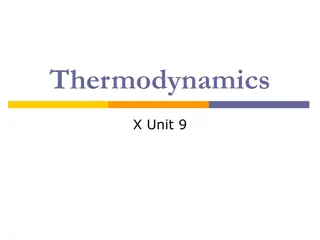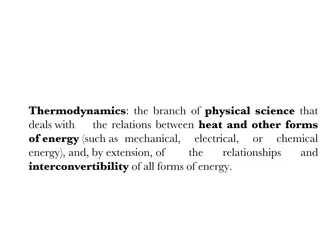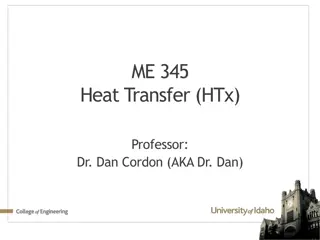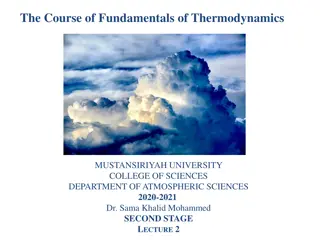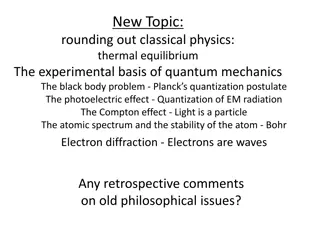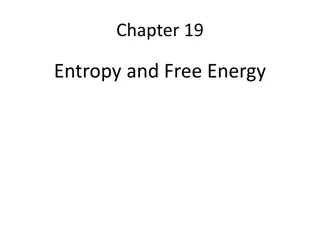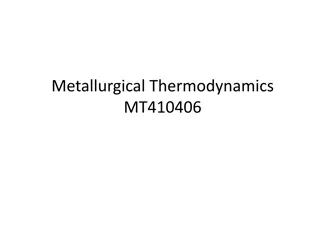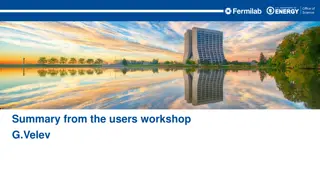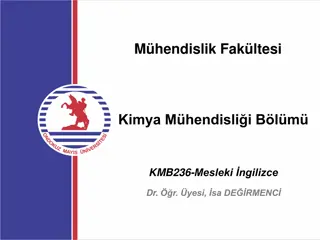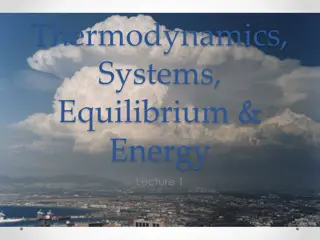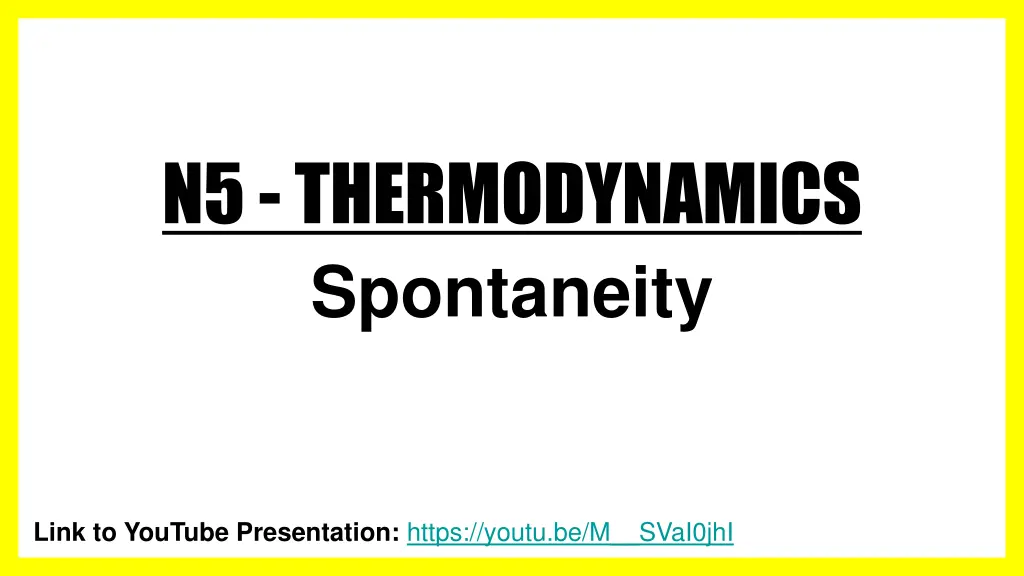
Understanding Spontaneity in Thermodynamics
Explore the concept of spontaneity in thermodynamics, learn how to predict if a reaction is driven by enthalpy and/or entropy, and understand the factors that determine the spontaneity of a reaction based on Gibbs Free Energy (G).
Download Presentation

Please find below an Image/Link to download the presentation.
The content on the website is provided AS IS for your information and personal use only. It may not be sold, licensed, or shared on other websites without obtaining consent from the author. If you encounter any issues during the download, it is possible that the publisher has removed the file from their server.
You are allowed to download the files provided on this website for personal or commercial use, subject to the condition that they are used lawfully. All files are the property of their respective owners.
The content on the website is provided AS IS for your information and personal use only. It may not be sold, licensed, or shared on other websites without obtaining consent from the author.
E N D
Presentation Transcript
N5 -THERMODYNAMICS Spontaneity Link to YouTube Presentation: https://youtu.be/M__SVaI0jhI
N5 - THERMODYNAMICS Spontaneity Target: I can explain what makes a reaction spontaneous, and can predict if a reaction is driven by enthalpy and/or entropy.
Spontaneous Processes Spontaneous: When a process occurs without outside intervention. Can be fast or slow Just because it canhappen, doesn t mean it will be fast! It could be very very slow! Most combustion is fast. Converting diamond into graphite is very slow.
Thermodynamics vs. Kinetics THERMODYNAMICS: Will the reaction happen under these conditions? Spontaneous Nonspontaneous YES or NO KINETICS: IF a reaction can occur, what is the speed of the reaction? FAST or SLOW
What determines spontaneity? Less chemical potential energy after the reaction means the reaction is thermodynamically favorable Determined by comparing the chemical potential energy of the system before and after the reaction. This difference in energy is called: Gibbs Free Energy ( G)
What determines spontaneity? G = negative = spontaneous G = positive = non-spontaneous
Spontaneity Based on G G > 0, positive non-spontaneous, NOT thermodynamically favorable G < 0, negative spontaneous YES thermodynamically favorable
Remember! Spontaneity Fast or Slow Thermodynamics Kinetics *NOTE* - Sometimes a reaction may be spontaneous, but you cannot see it happening at any observable rate that might be due to having a huge activation energy! It might be very hard to get over the activation barrier even though it is technically spontaneous. We call this being under kinetic control.
What Factors into G ? There are two factors that determine whether a reaction is spontaneous. Enthalpy change , H Entropy change , S
Enthalpy Contribution Enthalpy change, H You already know this one! Difference in total heat content of a system. (The difference in the sum of the internal energy and pressure/volume work energy of the reactants to the products.) *Important* H usually in kJ/mol
Enthalpy Considerations Spontaneous processes occur because they release energy from the system. So which would be more favorable for spontaneity? Endothermic or Exothermic? EXOTHERMIC! A release of energy to the system!
Favorability of Enthalpy Change Enthalpy change is favorable for exothermic rxns and unfavorable for endothermic rxns
Enthalpy Considerations Most spontaneous processes are: Exothermic But there are some spontaneous processes that are: Endothermic THINK How can something absorb heat energy, yet have a net release of Gibbs Free Energy?!
Because there are other things to consider! You can t just consider enthalpy! You must also consider ENTROPY! Most people think of entropy as the amount of randomness in the system. Bad definition... The number of microstate arrangements or the degree of energy dispersal is a better phrase than amount of randomness.
Think About Melting Ice Melting is an endothermic process, yet ice will spontaneously melt above 0 C. Even though it is endothermic which lends itself towards non-spontaneous, the increase in ENTROPY overcomes this problem, causing the reaction to end up spontaneous!
Entropy of Ice Melting... When a solid melts, the particles spread apart and have more freedom of movement. More freedom of motion increases the number of ways the particles can be arranged, and how spread out all the energy is. So liquid water has more entropy than solid ice does. It has more microstate arrangements.
Entropy Contribution Entropy change, S Difference in the number of possible microstate arrangements of the reactants compared to the products. More disorder means there are more ways to arrange the particles more microstate arrangements, more energy dispersal. *Important* S usually in J/K
Entropy Contribution Remember permutations in math class? The number of unique combinations you could make out of things like flipping coins? Similar idea! Now think about an ice cube versus gas particles those gas particles will be able to arrange themselves in WAY more combinations in 3-dimensional space than the solid particles could in their little cube.
Algebraic Sign on Entropy Positive ( + ) S Increase in the microstate arrangements Negative ( - ) S Decrease in the microstate arrangements
Favorability of Entropy Change Entropy change is favorable for increase in entropy and unfavorable for decrease in entropy
What Drives the Reaction? What is Driving the Spontaneity? Enthalpy change overcomes decrease in entropy Entropy change overcomes endothermic enthalpy Enthalpy driven Entropy driven H = - S = + H = - AND S = + H = + AND S = - Enthalpy and entropy both favorable Both Never spontaneous b/c enthalpy and entropy are both unfavorable. Neither
Summary Chart Favorable Enthalpy Entropy S = + Increase in entropy Gibbs Free Energy G = - Spontaneous Thermodynamically Favorable NOT Favorable H = - Exothermic Enthalpy Entropy S = - Decrease in entropy Gibbs Free Energy G = + Non-spontaneous NOT thermodynamically Favorable H = + Endothermic
Calculating G = 0 0 f 0 f G n G n G (products) (reactants) p r Just like you have done with H Have to have the G values for products and reactants to do it this way.
Gibbs-Helmholtz Equation G = H - T S BE CAREFUL WITH YOUR UNITS! Look out for J vs kJ
One Last Tidbit - Reversibility Doesn t mean the same thing in chemistry as in day-to-day life. ALL spontaneous rxns = IRREVERSIBLE Can t go backwards without outside intervention. Because there is a net release of energy when it proceeds in the forward direction!
Reversibility If a process is spontaneous in one direction, it MUST be non-spontaneous in the opposite direction.
Reversibility not what you think it is... A REVERSIBLE process will proceed back and forth between the two end conditions. Any reversible process is at equilibrium! This results in no change in free energy ( G=0).
YouTube Link to Presentation https://youtu.be/M__SVaI0jhI

